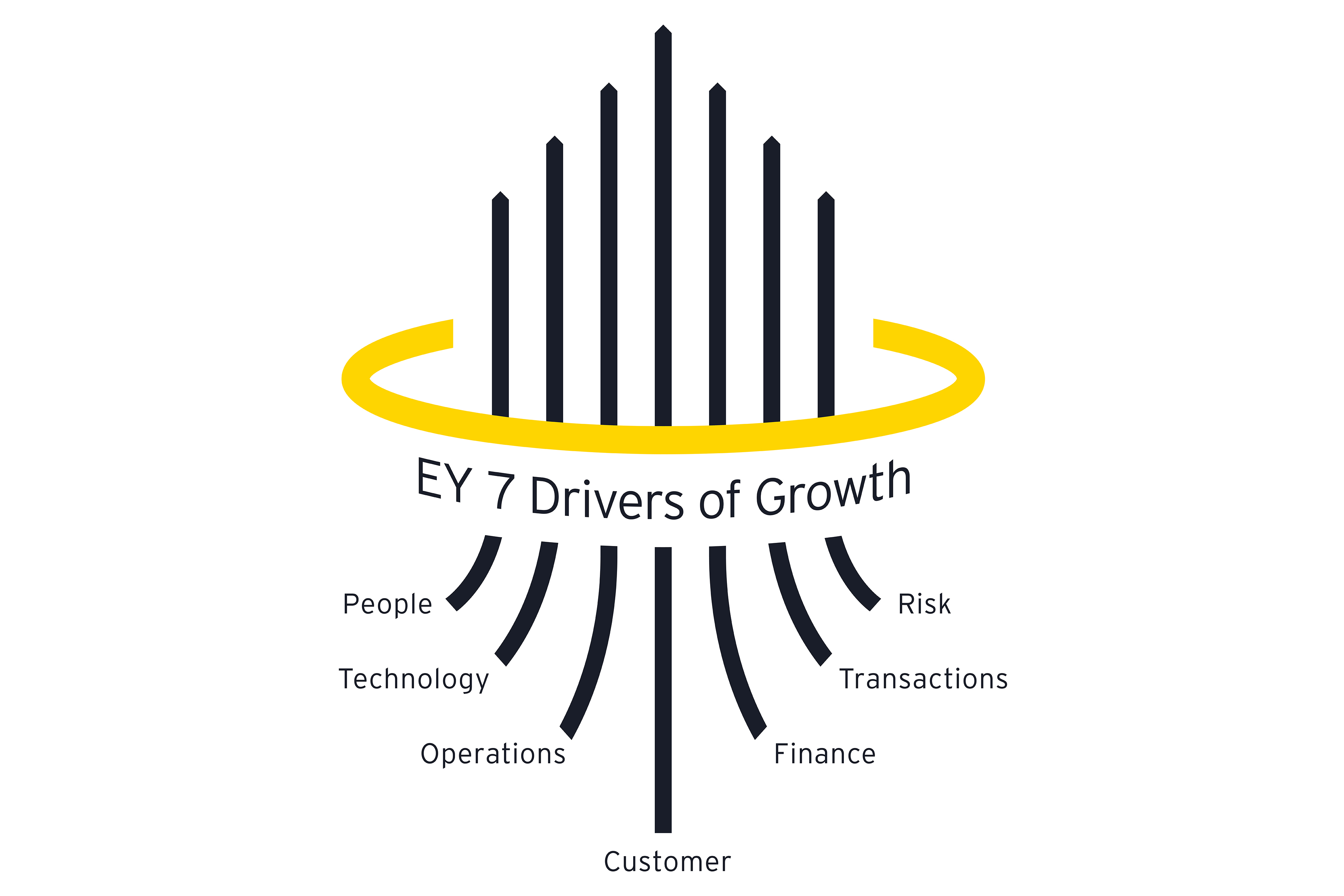The EY 7 Drivers of Growth
In today’s disruptive world, realizing your ambition and growing your business is an exciting challenge. EY has a long history of working alongside many of the world’s most ambitious CEOs, owners and entrepreneurs to support them to accelerate their journey to market leadership. Drawing on their successes, we have distilled these insights to create the EY 7 Drivers of Growth.
The team
What EY can do for you
The EY 7 Drivers of Growth is a framework that enables ambitious leaders to think differently about their businesses, unlock their full potential and successfully deliver their growth strategy. Find out more in the video below.
A 7 Drivers session will help you:
- Assess your current capabilities relative to your future aspirations
- Gain insight into the practices of market-leading companies
- Clarify your strategic priorities, opportunities and challenges
- Validate and refine your business strategy
- Build an action plan to help you achieve increased resilience and sustainable growth
- Achieve consensus among your leadership team about the future of your business and how to get there
Learn from the successes of the world’s leading entrepreneurs
Our research into the growth journeys of the world’s leading businesses – amid all kinds of market conditions - has shown that the most successful companies look at a broad set of capabilities and balance their investments in time, money and energy across all 7 Drivers as they grow. This has proven to be a key success factor for building resilience and driving sustainable growth.
Learn more about each of the 7 Drivers:
“The session helped me to understand key focus areas that will allow our business to scale. I feel empowered to make better strategic decisions.”
Read our latest 7 Drivers of Growth case studies
How a shift in focus unlocked an ambition to help high-risk patients
HMG Systems Engineering GmbH applied the 7 Drivers framework to transform their gene identification business.
4 Nov 2019
How JUMBO Seafood is paving the way to international growth
JUMBO Seafood applied the EY 7 Drivers of Growth framework to fulfill its ambition of bringing Singapore-style food to diners around the world.
22 Jan 2020
The team
Our latest thinking
Contact us
Like what you’ve seen? Get in touch to learn more.





